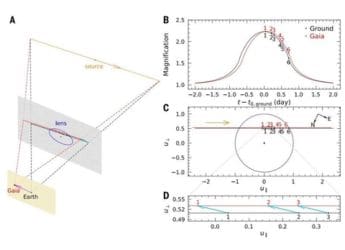- Home
- Science
- Science News
- Pluto's Icy Heart Regulates Its Atmospheric Circulation: Study
Pluto's Icy Heart Regulates Its Atmospheric Circulation: Study
During the day, a thin layer of nitrogen ice warms and turns into vapour on Pluto

Photo Credit: NASA/ JHUAPL/ SWRI
Nitrogen gas comprises most of Pluto's thin atmosphere
Pluto's famous "beating heart" of frozen nitrogen controls its winds and may give rise to features on its surface, new research has found. Uncovering how Pluto's atmosphere behaves provides scientists with another place to compare to our own planet. Such findings can pinpoint both similar and distinctive features between Earth and a dwarf planet billions of miles away.
The heart-shaped structure on Pluto, named Tombaugh Regio, quickly became famous after NASA's New Horizons mission captured footage of the dwarf planet in 2015 and revealed it is not the barren world scientists thought it was.
Nitrogen gas - an element also found in air on Earth - comprises most of Pluto's thin atmosphere, along with small amounts of carbon monoxide and the greenhouse gas methane.
Frozen nitrogen also covers part of Pluto's surface in the shape of a heart. During the day, a thin layer of this nitrogen ice warms and turns into vapour.
At night, the vapour condenses and once again forms ice. Each sequence is like a heartbeat, pumping nitrogen winds around the dwarf planet.
The new research, published in the Journal of Geophysical Research: Planets, suggests this cycle pushes Pluto's atmosphere to circulate in the opposite direction of its spin - a unique phenomenon called retro-rotation.
As air whips close to the surface, it transports heat, grains of ice and haze particles to create dark wind streaks and plains across the north and northwestern regions.
"This highlights the fact that Pluto's atmosphere and winds - even if the density of the atmosphere is very low - can impact the surface," said Tanguy Bertrand, an astrophysicist and planetary scientist at NASA's Ames Research Center in California and the study's lead author.
Most of Pluto's nitrogen ice is confined to Tombaugh Regio. Its left "lobe" is a 1,000-kilometre ice sheet located in a three-kilometre deep basin named Sputnik Planitia - an area that holds most of the dwarf planet's nitrogen ice because of its low elevation.
The heart's right "lobe" is comprised of highlands and nitrogen-rich glaciers that extend into the basin.
"Before New Horizons, everyone thought Pluto was going to be a netball - completely flat, almost no diversity," Bertrand said.
"But it's completely different. It has a lot of different landscapes and we are trying to understand what's going on there."
Bertrand and his colleagues set out to determine how circulating air - which is 1,00,000 times thinner than that of Earth's - might shape features on the surface. The team pulled data from New Horizons' 2015 flyby to depict Pluto's topography and its blankets of nitrogen ice.
They then simulated the nitrogen cycle with a weather forecast model and assessed how winds blew across the surface.
Catch the latest from the Consumer Electronics Show on Gadgets 360, at our CES 2026 hub.
Related Stories
- Samsung Galaxy Unpacked 2025
- ChatGPT
- Redmi Note 14 Pro+
- iPhone 16
- Apple Vision Pro
- Oneplus 12
- OnePlus Nord CE 3 Lite 5G
- iPhone 13
- Xiaomi 14 Pro
- Oppo Find N3
- Tecno Spark Go (2023)
- Realme V30
- Best Phones Under 25000
- Samsung Galaxy S24 Series
- Cryptocurrency
- iQoo 12
- Samsung Galaxy S24 Ultra
- Giottus
- Samsung Galaxy Z Flip 5
- Apple 'Scary Fast'
- Housefull 5
- GoPro Hero 12 Black Review
- Invincible Season 2
- JioGlass
- HD Ready TV
- Laptop Under 50000
- Smartwatch Under 10000
- Latest Mobile Phones
- Compare Phones
- Vivo Y50e 5G
- Vivo Y50s 5G
- Realme 16 Pro+ 5G
- Realme 16 Pro 5G
- TCL Nxtpaper 70 Pro
- OPPO A6 Pro 5G
- Honor Power 2
- OPPO A6s
- Zephyrus Duo 16 (2026)
- Asus ROG Zephyrus G16 (2026)
- Realme Pad 3
- OPPO Pad Air 5
- Xiaomi Watch 5
- Huawei Watch 10th Anniversary Edition
- Acerpure Nitro Z Series 100-inch QLED TV
- Samsung 43 Inch LED Ultra HD (4K) Smart TV (UA43UE81AFULXL)
- Asus ROG Ally
- Nintendo Switch Lite
- Haier 1.6 Ton 5 Star Inverter Split AC (HSU19G-MZAID5BN-INV)
- Haier 1.6 Ton 5 Star Inverter Split AC (HSU19G-MZAIM5BN-INV)

















